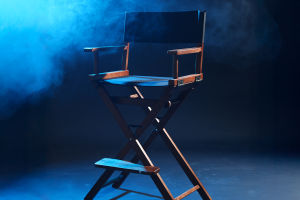When watching a movie, have you ever been surprised by how real the sounds seem? From footsteps to rain, or the subtle rustle of clothes, these sounds pull us deeper into the story.
But have you wondered how filmmakers create such vivid soundscapes? Today, let's uncover the magic behind movie sounds and why they feel so authentic.
What Are Sound Effects (SFX)?
Sound effects, or SFX, are the recorded or created sounds added to films to enhance the visual experience. These include everything from explosions and car engines to birds chirping and doors creaking. Some sounds are recorded on location, while others are created or enhanced in studios. The goal is to match sounds perfectly to the images, making the scene believable and immersive.
The Art of Foley: Bringing Sounds to Life
Foley is a special kind of sound effect created by artists who reproduce everyday sounds in sync with the film. For example, footsteps on different surfaces, the clinking of glasses, or the swish of clothing. Foley artists use various props and surfaces to mimic these sounds precisely. This hands-on approach adds a layer of realism that raw location audio often cannot capture.
Background Music (BGM) and Emotional Impact
Background music, or BGM, sets the mood and supports the story's emotions. It can build tension, highlight romance, or bring joy. Composers work closely with directors to create music that fits the film's tone and pacing. Unlike sound effects, BGM is often composed specifically for the movie, carefully timed to enhance the viewer's emotional experience.
How Are These Sounds Created and Mixed?
The sound production process begins early, often during script reading. During filming, some sounds are recorded live, but many are added later in post-production. Sound designers and mixers blend dialogue, SFX, Foley, and BGM to create a balanced and dynamic audio experience. They adjust volume, direction, and effects like echo or reverb to make sounds feel natural and place the audience inside the scene.
Why Do Movie Sounds Feel More "Real" Than Everyday Life?
Interestingly, movie sounds are often enhanced or exaggerated to feel more vivid. For example, footsteps might be louder or more distinct to draw attention, or a door closing might have a deeper thud to create atmosphere. This selective amplification helps guide the viewer's focus and emotions, making the experience more engaging than real life's often muted or chaotic soundscape.
Expert Insights on Film Sound Design
Sound experts emphasize that great sound design is invisible—it supports the story without distracting the audience. According to sound designer Ben Burtt, "The best movie sounds are those you don't consciously notice but that make the world feel alive and believable." This subtle craftsmanship is what turns simple noises into powerful storytelling tools.
What Can We Learn from Movie Sound Magic?
Understanding how sound effects, Foley, and background music work together helps us appreciate the complexity of filmmaking. It shows that sound is not just a technical detail but a creative art that shapes our emotional connection to movies. Next time you watch a film, try paying attention to the sounds—you might discover a new layer of magic.
What Sounds Stay with You?
Have you ever been moved or surprised by a movie's sound? Which sound effects or music moments do you remember most? Share your experiences and let's celebrate the hidden art of movie sound together!

